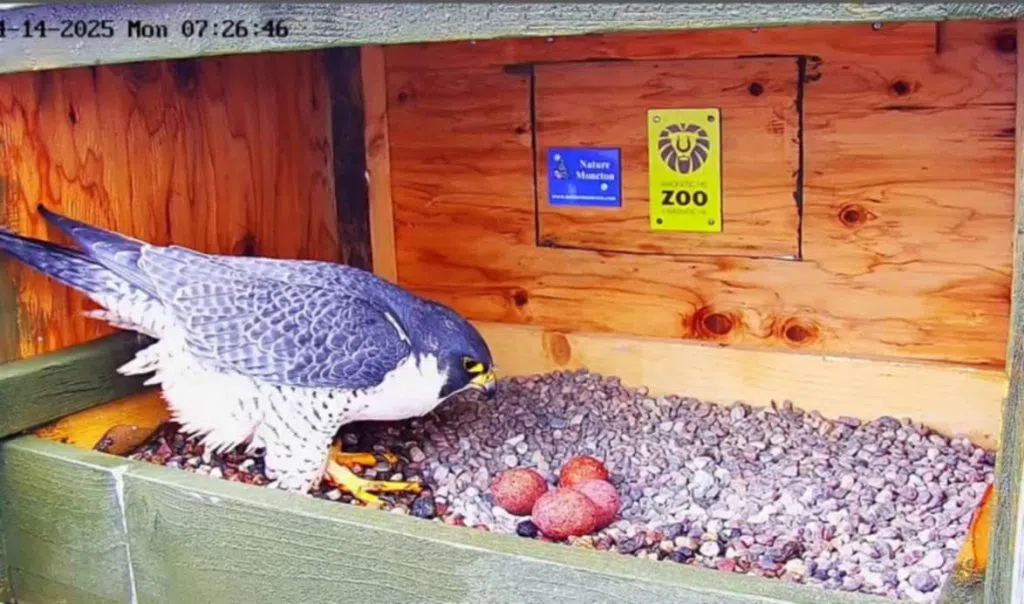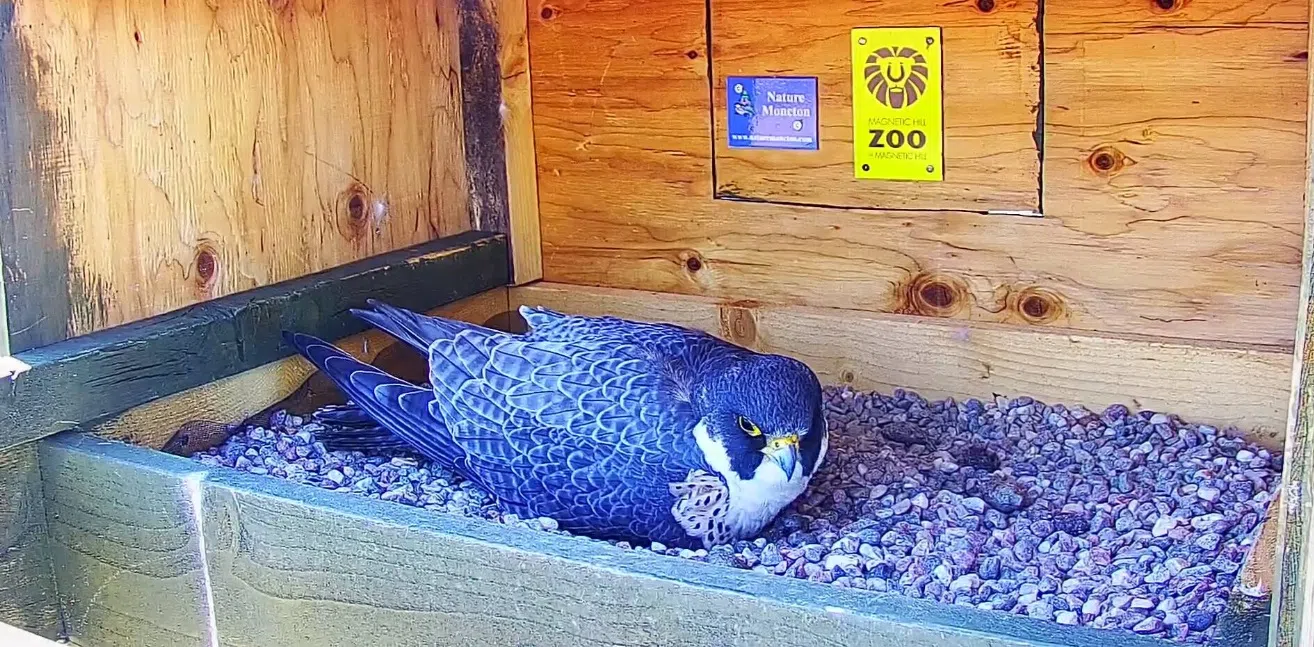Thousands of viewers are patiently waiting for the arrival of four peregrine falcon chicks.
They’re viewing them live online, from the nest on the side of the Assumption building.
A new nest box was built in February, and the camera came back online early in April.
Magnetic Hill Zoo Director Jill Marvin says the parents are currently watching over the four eggs.
“The peregrine falcon is such an incredible species of speed and agility. Watching them lay the eggs, and right now they’re incubating those eggs and then watching them care for them. It gives us a glimpse into something promising and giving hope,” Marvin says.
The expectation is that the eggs will hatch sometime around the Mother’s Day weekend.
“She laid her eggs a few days later than last year, the fourth one on April 14. So from there, the first one should hatch out anywhere from 31 to 34 days,” Marvin adds.
On the Magnetic Hill Zoo peregrine falcon online camera, you can watch the male and female as they switch back and forth to incubate the eggs.
“You also see her rotating the eggs, which is an important process, as well as incubating. Some of the things that you might be able to see while she’s sitting. You’ll see her watching in the skies, and then sometimes you’ll see her beak opening and closing, and that’s usually when the male is around. The male may bring food, or the male is coming to give her relief so that she can go out,” Marvin explained..
The male falcon won’t sit as much, but you can especially tell the difference when the two birds are together. Marvin says the male is much darker, especially around his head, and the males are also smaller.
The nest box was constructed first in 2011 by bird enthusiasts, in partnership with Nature Moncton. The Zoo built a brand new nest box this year.
“It is on top of the Assumption building in downtown Moncton. If you go to the back of the building towards the Petitcodiac, you can actually see it up in the corner. You can watch the peregrines flying around. When those chicks fledge, you can see them flying around as they learn to fly,” Marvin adds.
She says once they do hatch, they grow really quickly, and by the end of June, they are usually fully fledged and flying around. That’s when the camera will be shut off until next year, when the process begins all over again.









